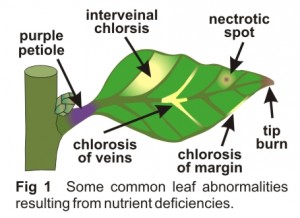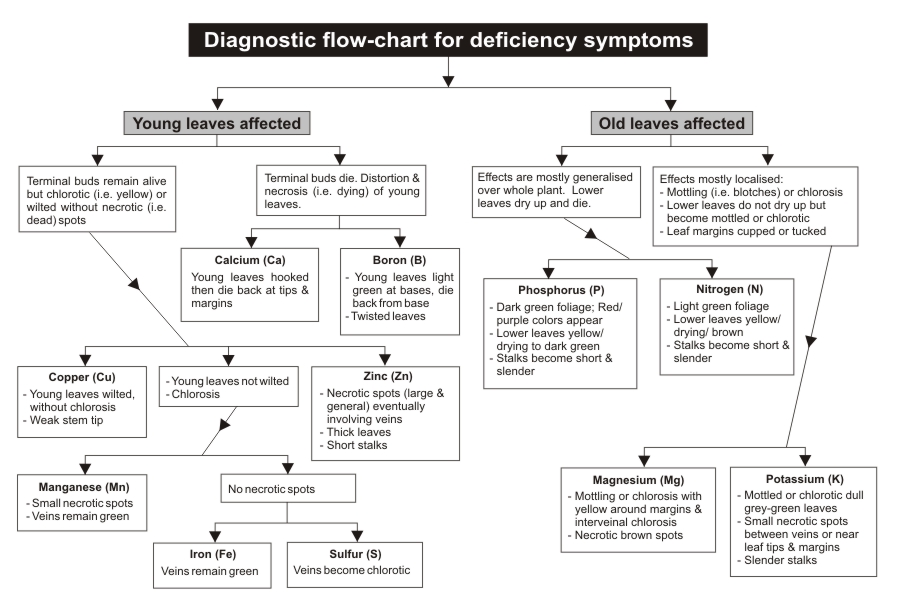
The early detection of deficiency symptoms is important because symptoms are often more unique and easier to distinguish when they first appear (Refer to flow-chart below). Early detection of problems can also help reduce or eliminate yield loss. Early detection also prompts the need to check for other possible causes such as excessive humidity and poor EC and pH control.
Note, deficiency symptoms can be easily confused with symptoms arising from insect attack, diseases, under-watering, and genetic abnormalities.
Sometimes in intense indoor growing applications — especially when carbon dioxide levels are supplemented to beyond normal atmospheric conditions—plants demand even more nourishment. Nutrient deficiencies such as leaf curl and yellowing tend to show themselves in plants that are directly under the grow lights—as these are growing the fastest. Move these taller plants to the periphery and try to achieve a slightly ‘concave’ canopy that dips directly beneath the grow lights.

Andrew Taylor is an analytical chemist with additional qualifications in plant function and nutrition. He has over 25 years’ experience in product research and development, and commercial manufacturing. Visit their website at Floramax.com.
Related Articles & Free Email Newsletter
Calcium is the Forgotten Fertilizer
The Importance of pH in Horticulture


Comment here